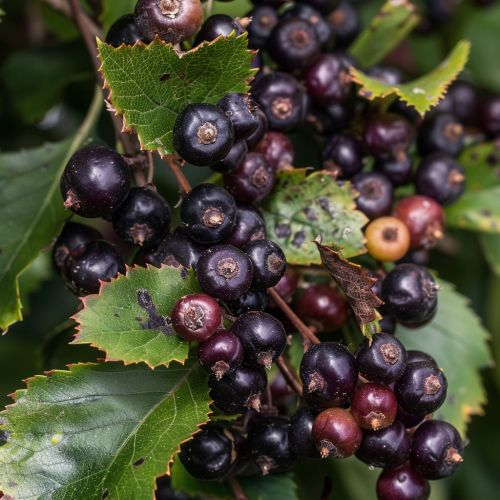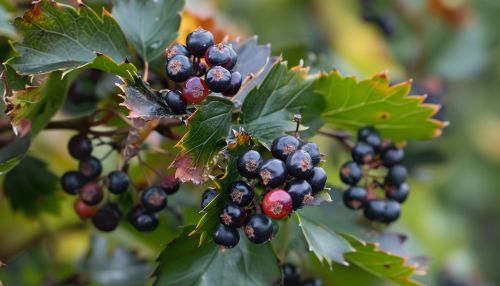Crataegus douglasii
Description


Crataegus douglasii, commonly known as black hawthorn, is a species of hawthorn native to western North America. It is a deciduous shrub or small tree that belongs to the family Rosaceae. The species is named after the Scottish botanist David Douglas, who introduced many North American plants to Europe.
Taxonomy and Nomenclature
Crataegus douglasii was first described by the botanist John Lindley in 1834. The genus name Crataegus is derived from the Greek word kratos, meaning strength, in reference to the hardness of the wood. The specific epithet douglasii honors David Douglas, who collected the plant during his explorations in the early 19th century.
Morphology
Crataegus douglasii typically grows to a height of 3-8 meters. The bark is grayish-brown and smooth when young, becoming fissured with age. The leaves are simple, alternate, and serrated, measuring 2-6 cm in length. They are dark green on the upper surface and lighter underneath. The flowers are white, 1-2 cm in diameter, and appear in clusters (corymbs) in late spring. The fruit is a pome, dark purple to black when mature, and measures 6-10 mm in diameter.
Distribution and Habitat
Crataegus douglasii is found in a variety of habitats, including riparian zones, open woodlands, and forest edges. Its range extends from Alaska and British Columbia in the north, through the Pacific Northwest, and into the Rocky Mountains and Great Basin. The species thrives in well-drained soils and can tolerate both full sun and partial shade.
Ecology
Crataegus douglasii plays a significant role in its ecosystem. The flowers provide nectar and pollen for a variety of pollinators, including bees and butterflies. The fruit is an important food source for birds and mammals. The dense thickets formed by this species offer shelter and nesting sites for wildlife.
Uses and Cultural Significance
The wood of Crataegus douglasii is hard and durable, making it suitable for tool handles and other small wooden items. The fruit, although somewhat astringent, can be used to make jellies and preserves. Indigenous peoples of North America have traditionally used various parts of the plant for medicinal purposes, including treatments for digestive issues and heart ailments.
Conservation Status
Crataegus douglasii is not currently listed as threatened or endangered. However, habitat loss and changes in land use practices could impact local populations. Conservation efforts focus on preserving natural habitats and promoting the use of native plants in landscaping.
